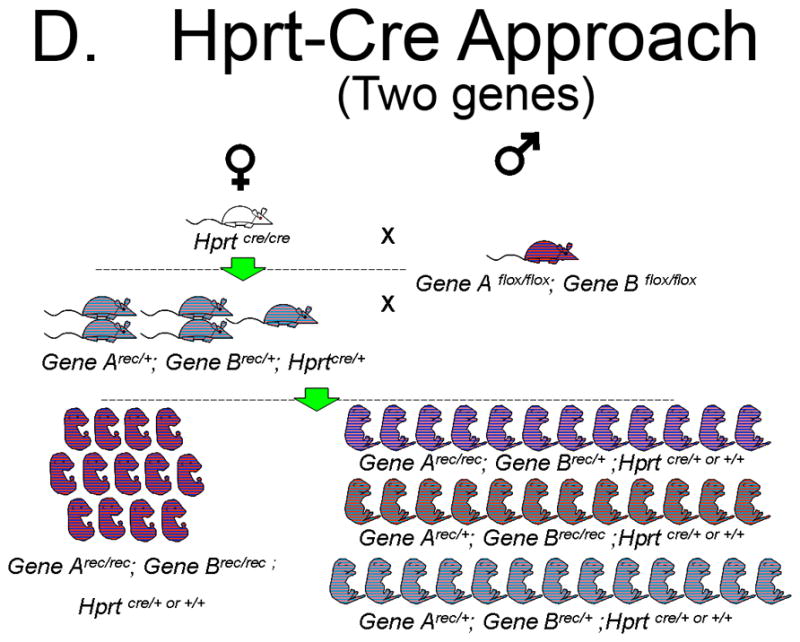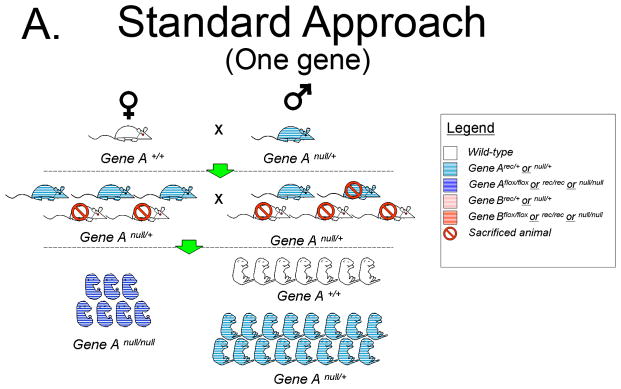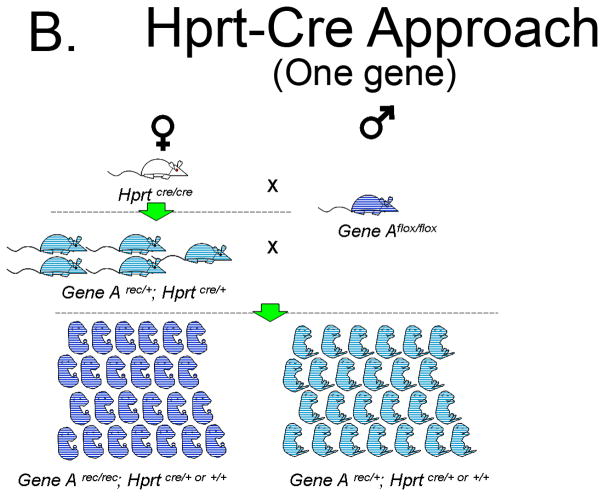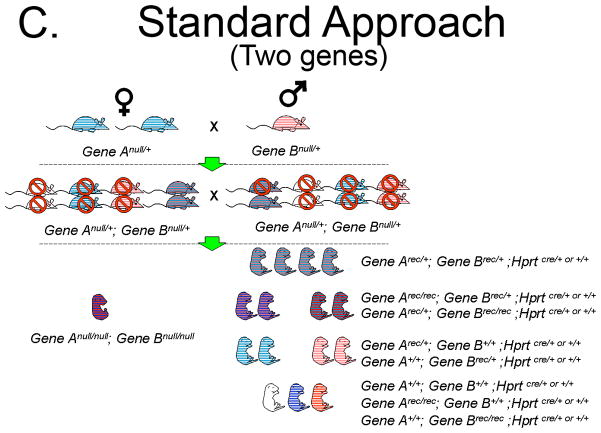Figure 5. Comparison of the efficiency of a standard heterozygous null/+ breeding strategy to the Hprt-Cre strategy.

A. Generation of homozygous null embryos for a single gene with the Standard Approach, a heterozygous null/+ breeding strategy. With this strategy the 3 F1 heterozygous females and single F1 heterozygous male will yield 7 to 8 null embryos. Thus, 25% of embryos in the F2 generation will be homozygous null embryos.
B. Generation of homozygous null embryos for a single gene with the Hprt-Cre Approach. With this strategy 50% of embryos in the F2 generation will be homozygous for the recombined allele.
C. Generation of homozygous null embryos for two genes with the Standard Approach, a heterozygous null/+ breeding strategy. With this strategy multiple females carrying the null allele are needed and 2 F1 double heterozygous females will be required to generate a single embryo. Only 6.25% (1/16) of embryos in the F2 generation will be homozygous null embryos for both genes.
D. Generation of homozygous null embryos for two genes with the Hprt-Cre Approach. With this strategy 5 F1 double heterozygous females will yield a total of 50 embryos, of which 12 or 13 will be homozygous null embryos for both genes. Therefore, 25% of embryos in the F2 generation will be homozygous for the recombined allele.



